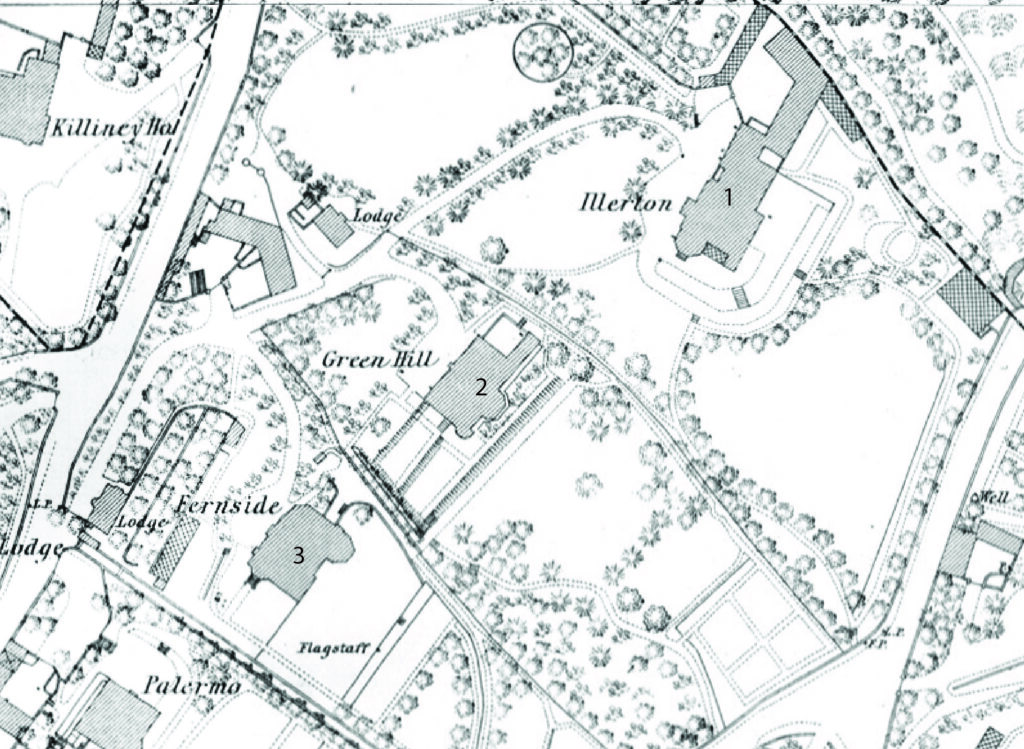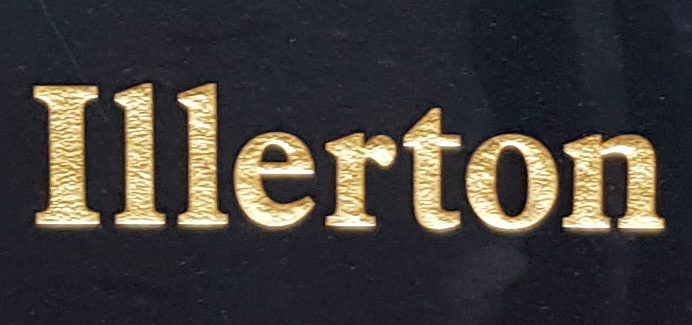Illerton
| Name | Illerton |
|---|---|
| Address | Killiney Hill Road |
| Year Built | 1863/64 |
| Architect | Deane & Woodward |
| Exists today | Yes |
| On 1888 map | Yes |
The description and photograph below are from ‘The Architecture of Deane and Woodward’ by Frederick O’Dwyer, 1997.
William Bewley’s Illerton is probably by T.N. Deane rather than Benjamin Woodward and does not appear in Thom’s Directory before 1864. Bewley purchased the site from Exham in 1863, the boundary having been laid out by Patterson in January of that year. The elevations and chimneys have a liberal sprinkling of Jacobethan ornament. The porch is probably original, though it looks like an addition. The kitchen and servants’ quarters are separately articulated under a straightforward, and relatively low, hipped roof, a feature common to Green Hill and also found in Glencairn. There is a characteristically detailed veranda and at right angles to it a conservatory with a curved roof. Green Hill and Fernside had similarly detailed, but free-standing conservatories. In the garden of the latter there is also a rustic hut, probably original. Illerton was the only house with an attached stable-block, a substantial structure with its own yard. Its neighbours had their stables on the north side of the avenue. The avenue entrance was flanked by piers of unexceptional design set in front of a plain gate lodge, with a curious triangular bay window, derived from Clontra, and giving the keeper excellent views up and down the drive. In 1862 the Antient Concert Rooms were sold. Within a couple of years the Society itself had ceased; it last appears in the 1866 edition of Thom’s, with Exham as honorary secretary and Joseph Robinson as a committee member. Robinson had resigned as conductor in 1864. By 1866 he had left Killiney and had gone back to his town house, 3 Fitzwilliam Street Upper, which he had first occupied in 1857. Francis Robinson continued to live at Undercliffe until 1871, the year before his death. It was later the summer home of the Right Honourable Edward Sullivan, master of the rolls. In the twentieth century Undercliffe was occupied for a time by the family of the academic and writer Enid Starkie, whose autobiography describes her childhood there; while Illerton was later the home of the artist Flora Mitchell. In 1871 Robert Exham built a large classical house of little architectural pretension, called Kenah Hill, about a quarter of a mile to the west of Fernside.

As described by Peter Pearson in ‘Between the Mountains and the Sea’ 1998
Illerton, built in 1863 for William Bewley was a brick house of Gothic design, but was later rendered and considerably altered. The house was acquired by the Jameson family who changed the name to Alloa, after the Jameson family seat in Scotland. Hidden away at the bottom of a private avenue, was once the home of artist Flora Mitchell (widow of William Jameson), whose book Vanishing Dublin is now long out of print and is much treasured.

Landed Estates Court Advertisement of 12th May 1875 from The Freeman’s Journal



